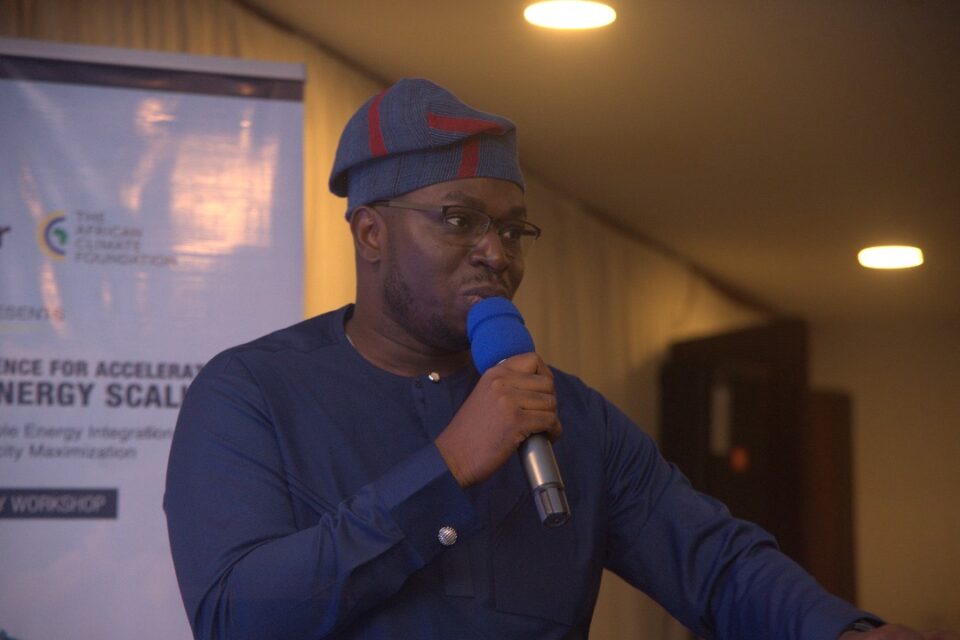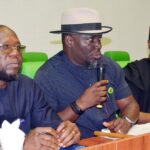The Nigeria Wind Energy Council (NWEC) has called for the advancement of wind energy in Nigeria in such a capacity that it can be ramped up to 7gigawatts by 2050.
Coordinator of the Council, Temitope Omowumi, made this case in his paper presentation on a two-day workshop organised by Nextier and the Africa Climate Foundation.
His presentation focused on the Overview of Wind Energy: Introduction to Wind Energy, Wind Energy Resources, Measurement and Assessment, while the workshop had the theme – Pre-Empting Resilience for Accelerated Renewable Energy Scaling.
Omowumi said the objective of the presentation was to introduce wind energy fundamentals, understand wind energy resource potential and explore methods for measuring and assessing wind resources.
“NWEC has the mission to increase the penetration of wind energy as a renewable energy system and sustain a forum for members to address issues of common interests geared towards advancing wind energy development in Nigeria,” he said.
He stated that the thematic areas of activities of the council are communication and advocacy, technological data and market intelligence for wind, capacity building and certification, and identifying relevant partnerships and collaborations to push the topic of wind.
Onowumi noted that Nigeria should be talking about wind because ten percent of the windiest areas in Nigeria have wind speeds averaging around 6.79 meters per second, especially when you go above 75 meters in height; if that is taken into consideration, Nigeria’s annual wind energy production is significant, and Nigeria should tap into its potential.
“In Nigeria, findings show that there is wind potential with a projected generation capacity of 7GW by 2050. Wind energy is also a competitively-priced renewable resource. It also complements solar and other technologies, minimises disruption of land use, and offers opportunities for community benefit sharing,” he stated.
He added that the potential Nigeria has in wind is the Katsina wind farm with 10.175 MW located at the Lamba Rimi in Rimi local government of Katsina state. It holds the distinction of being Nigeria’s only operational wind energy initiative.
He stated that Kenya has an installed capacity of wind of 435MW, the West African region has 296MW, and Nigeria has 10MW, and there is significant untapped potential in Nigeria of 1000GW and West Africa of 9144GW.
“There are only two countries that are exploring wind energy; even with the coastal line we have in West Africa, there are no offshore applications, yet we hope to get there.
They are Parc Eolien Taiba N’diaye in Senegal with a capacity of 158.7MW, with an annual energy production of 450 GWh and can abate annum 300,000 tonnes of CO2 and katsina wind farm with 10.175 MW with an annual energy production of 0.987GWh and abate annum tonnes of 493.45 CO2. If operational, the Katsina wind farm will be abating 500 tons of CO2; aside from energy access, it contributes to net – zero in Nigeria,” he said.
The largest wind farm in Africa is the Lake Turkana wind farm in Kenya, which produces what the entire wind farm in West Africa can produce. It is a flagship reference project that everyone in Africa is proud of. The Lake Turkana wind farm capacity is 310.25MW, with annual energy production of 1550GWh, he stated while explaining that the wind farm can abate an annum of 736,615 tonnes of CO2.
NWEC was formed as a result of identifying the gap for independent non-political and non-profit agency to advance the cause of wind, coupled with the fact that the topic of wind energy has not been considered as top compared with solar.
The Council is affiliated with the Global Wind Energy Council and the vision of NWEC is to actively amplify the bridging of energy access gaps in Nigeria to advance citizen quality of life.


